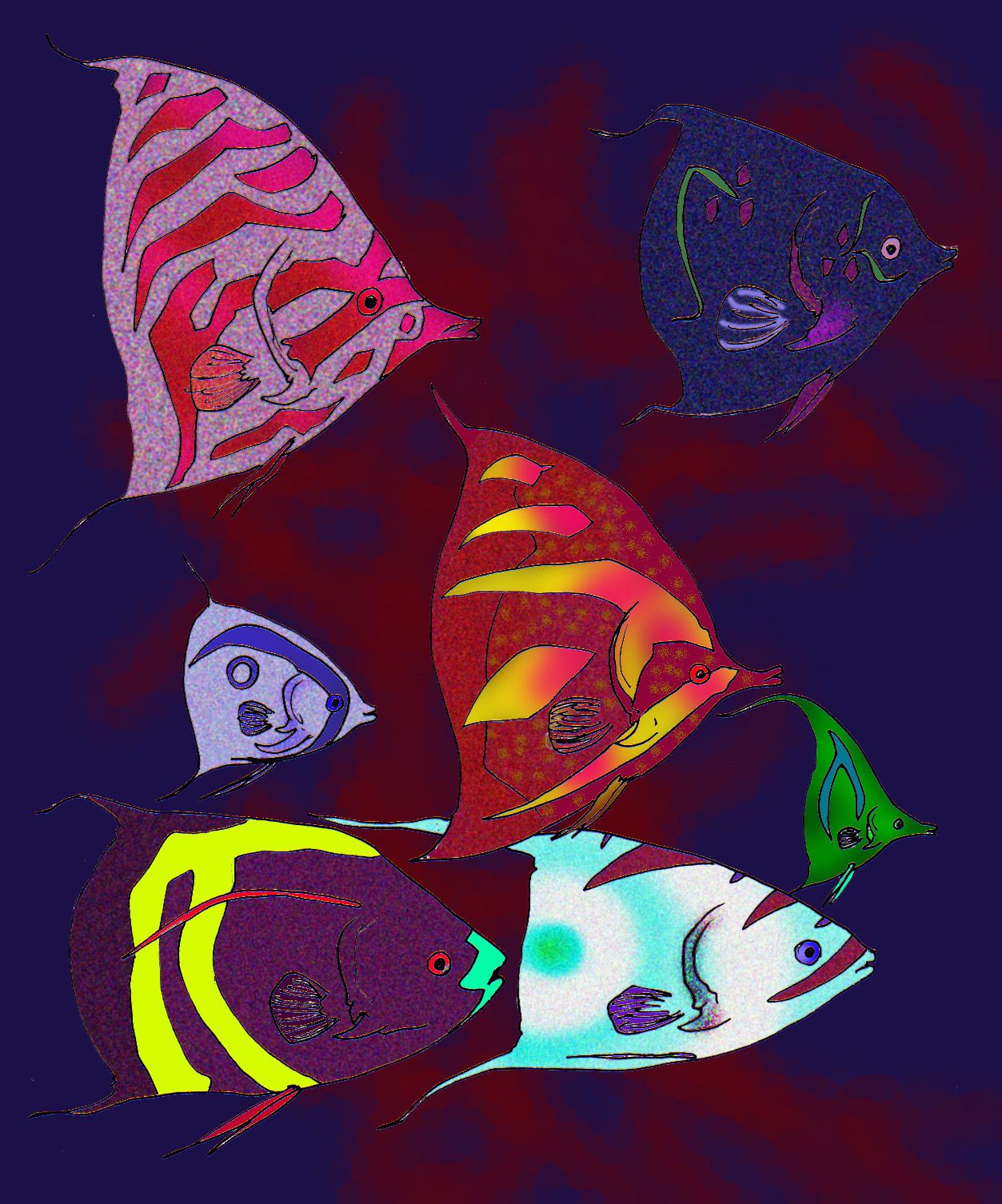HOME | DD
 avancna — Triangulichthids
avancna — Triangulichthids

Published: 2004-07-06 05:03:27 +0000 UTC; Views: 714; Favourites: 7; Downloads: 15
Redirect to original
Description
The Triangulichthids are a large family of small, mostly tropical fish who hold ecological niches analogous to the niches held by the Terran angelfishes and butterfly fishes (families Pomacanthidae and Chaetodontidae. respectively). These brightly colored, jewel-like fishes alternatively winkle out invertebrate from rocks, or feed on planktonic organisms, some species even change their feeding habits as the day (or night) progresses.Triangulichthids are distinguished from other neopercoids by their triangular shape, which is enhanced by the fact that their dorsal, caudal and anal fins are fused into a single fin, and by the spine on each gill-operculum. The spines are not used for defense, but for slashing rivals with.
In the top left corner, Forcipigeropsis roseastriatus is a common fish found off the southern coast of Busceterria, preferably in sandy-bottomed kelp forests.
In the top right corner, Caerulasoma araliaflora inhabits reefs on both coasts of Avigonia. It swims in pairs, or trios, feeding on small molluscs, which are sucked out of their shells. Despite C. araliaflora's expansive range, it remains rare throughout its preferred environment.
The center/left fish is Caerulasoma ocellatus, a schooling fish of Pleidaian and Northern Avigonian reefs. Unlike its relative, C. araliaflora, C. ocellatus swims in huge, plague-like schools which descend upon the reefs each day to feed on algae, and any invertebrates hiding within as well.
The center fish is Forcipigeropsis chrysaor, a solitary coral browser which establishes territories throughout the reefs of Palao, and its satellite islands.
To the right of F. chrysaor is its close relative, F. lamda. F. lamda forms schools from ten to forty individuals which patrol a patch of dead coral, where the school cultivates the algae they feed on (and defend from intruders).
The lower left fish is Iodosoma aquarhynchus, a peculiar fish from the kelp forests of Orzan waters. What sets this fish apart from its relatives is that it establishes a burrow, which is lined with kelp leaves, apparently in order to lure small herbivorous crustaceans and diademaspids.
The lower right fish is Albaturquoisiodes ionopteryx. Unlike almost all other triangulichthids, A. ionopteryx is pelagic, feeding and lairing within floating masses of sargassum-like seaweeds.
Related content
Comments: 3

👍: 0 ⏩: 0

Interesting how "some species even change their feeding habits as the day (or night) progresses"! What do you mean exactly?
I've already told you how much I like the drawing, especially Forcipigeropsis chrysaor because of its warm colourings.
👍: 0 ⏩: 1

They change their feeding habits, in that, in some species, when they come out of their nighttime hiding spots, they may first start feeding on plankton schools, and later, when the plankton retreats to other haunts, the fish then start browsing for encrusting animals, or so on.
👍: 0 ⏩: 0






















